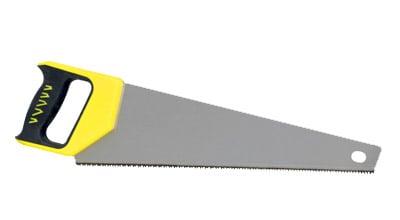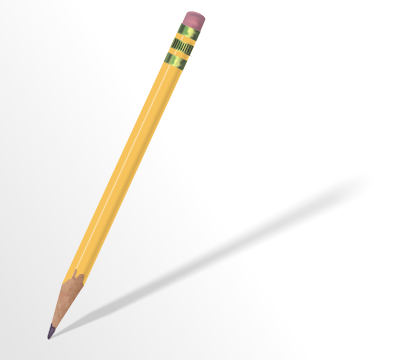Fast and Easy Science Fair Projects: Get the Point






This is my 30th hub on Fast and Fair Science Fair Projects. This one is easy and fun! I'm sure you'll enjoy reading and trying out this one too, especially kids! Have fun!
Changes affect surface areas
Purpose: Studying surface area differences
Overview: A famous trick long-ago India was for a person to lay down on a bed of nails. Ouch! How could they do that without the nails sticking right into them? Physics, that's how!
The term "surface area" refers to the total area of an object exposed to the space surrounding it. Imagine a sailboat trying to get anywhere with a sail only 2 feet (60 cm) by 2 feet. its surface area would be only 2 feet (60 cm) by 2 feet. Its surface area would be only 4 square feet (360 cm square), certainly not enough to catch any meaningful wind. The large surface area of a big sail is needed to really capture and harness wind power.
Let's get back to the man on the bed of nails. The surface area of the pointed end of a large nail is certainly not very big. But, what if there were a thousand nails all fairly close together? If a person lies gently on the bed, the weight of the person could be distributed over the total surface area of the nail points. Lying on the bed of nails doesn't sound like something you would want to do, but with the help of physics and "surface area," it seems not as painful as you might think.
Women wearing very tiny high (spike) heels, perhaps only 1/4 inch or 1 centimeter square, have been known to break the toes of a dance partner. Imagine even an average-sized grown woman concentrating almost all her weight on two such little square heels! Each one of those little heels would have a very powerful downward pressure!
We can expose the "bed of nails" trick as a fraud by proving that when weight is distributed over a lot or nails compared to just a few, there is less force per nail tip because of the total increase in surface area of the combined tips.
Hypothesis: When a weight is divided over a greater surface area (many nails), each nail will make a smaller impression in a piece of wood under it.
You need:
- An adult with a saw (to cut the wood)
- 4 squares of soft pine board. 11 inches (28 cm) by about 1/2 inch (1.25 cm) thick
- 104 roofing nails, 1.5 to 2 inches (4-5 cm) long)
- Hammer
- Ruler
- Pencil
Procedure: Have and adult cut some soft pine board into 11-inch (28 cm) squares. The boards should be thin, no bigger that about 1/2-inch thick.
With a ruler, make marks all the way around the edge of one of the pieces of wood at 1-inch (2.5 cm) increments. Then draw lines from the points on one side to the other point on the opposite side, making a grid of 1-inch (2.5 cm) squares across the surface of the board.
Lay the board outside on the ground. Using a hammer, pound a flat head roofing nail at each spot where lines intersect. There will be hundred intersecting points. The nails must be long enough to go through the board and stick out the side, extending through at least a half inch (about 1.25 cm). When pounding the nails in, they will stick harmlessly into the ground.
Lay another piece of pine wood on a hard surface, such as a sidewalk or paved driveway. On top of it, lay the board with nails, with the nails facing down. Next, place another pine on top. This board will help insure that none of the nails will back out when weight is put on them. Now stand on the boards. Jump up and down once. Remove the top two boards and observe the nail depressions made in the bottom board.
Now we want to keep the weight Constant, but use less nails, makes the surface area the Variable. So, lay the fourth board on the ground and pound four nails into it, one near each corner, perhaps one inch (2 cm) in from the sides.
Turn the board with the nail depressions in it over so its smooth side is facing up. Lay the board with only four nails on top of it, with the nails facing down. As before, lay the other piece of pine on top to keep the nails from backing out. Then stand on the boards and jump up and down once.
Remove the boards. Examine the board with the nail depressions in it. Are the nail depression marks deeper when all of your weight was distributed by only four nails compared to when the surface area of 100 nails distributed your weight?
Results an Conclusion: Write down the results of your experiment. Come to a conclusion as to whether or not your hypothesis was correct.
Something more: Try measuring the depth of the impressions. Use a toothpick.
Thanks for reading this one! Hope you liked it! If you want more on Fast and Easy Science Fair Projects, you can try my other Hubs relating to the topic. Here are five of my latest Hubs on Fast and Easy Science Fair Projectsfor you:
- Fast and Easy Science Fair Projects: Room for Brightness
Reflected Light Purpose: Show that a room is better lit when the room's walls are painted in bright colors compared to a room where the walls are dark (makes a room safer, (reduces eye fatigue when... - Fast and Easy Science Fair Projects: We are #2
Second- and third-class levers Purpose: Learn to use a second class lever (a simple machine) to reduce the force required to lift a heavy object. Overview: A lever is mage up of a long shaft or board... - Fast and Easy Science Fair Projects: Watt?
Comparing light output and power consumption Purpose: Determine if a 50-watt light bulb gives off as much light as two 50-watt bulbs. Overview: Incandescent light bulbs, the kind used in most household... - Fast and Easy Science Fair Projects: Hot rocks
Heat transfer from one medium to another Purpose: Is there a good way to store solar heat, and release it slowly over time? Overview: Did you ever touch a rock that has been baking in the sun on a... - Fast and Easy Science Fair Projects: Unwelcome Gusts
This is my 28th hub on Fast and Fair Science Fair Projects. This one is extremely easy and fun! I'm sure you'll enjoy reading and trying out this one too, especially kids! Have fun! ...














